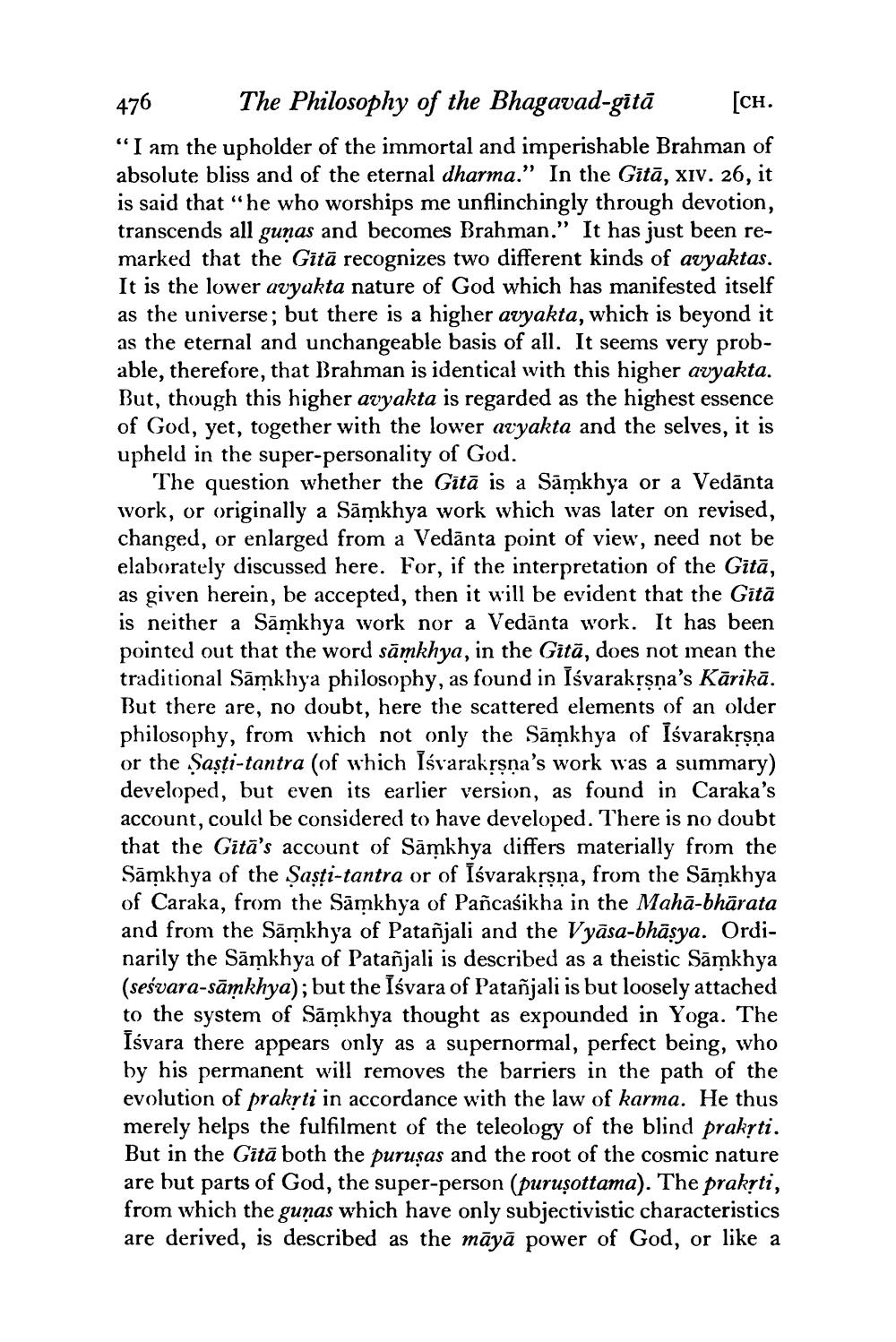________________
476
The Philosophy of the Bhagavad-gitā
[CH.
"I am the upholder of the immortal and imperishable Brahman of absolute bliss and of the eternal dharma." In the Gitā, XIV. 26, it is said that "he who worships me unflinchingly through devotion, transcends all gunas and becomes Brahman." It has just been remarked that the Gitā recognizes two different kinds of avyaktas. It is the lower avyakta nature of God which has manifested itself as the universe; but there is a higher avyakta, which is beyond it as the eternal and unchangeable basis of all. It seems very probable, therefore, that Brahman is identical with this higher avyakta. But, though this higher avyakta is regarded as the highest essence of God, yet, together with the lower avyakta and the selves, it is upheld in the super-personality of God.
The question whether the Gitā is a Samkhya or a Vedanta work, or originally a Samkhya work which was later on revised, changed, or enlarged from a Vedanta point of view, need not be elaborately discussed here. For, if the interpretation of the Gitā, as given herein, be accepted, then it will be evident that the Gitä is neither a Samkhya work nor a Vedanta work. It has been pointed out that the word samkhya, in the Gitā, does not mean the traditional Sāmkhya philosophy, as found in Iśvarakṛṣṇa's Kārikā. But there are, no doubt, here the scattered elements of an older philosophy, from which not only the Samkhya of Isvarakṛṣṇa or the Saști-tantra (of which Iśvarakṛṣṇa's work was a summary) developed, but even its earlier version, as found in Caraka's account, could be considered to have developed. There is no doubt that the Gita's account of Samkhya differs materially from the Samkhya of the Saṣṭi-tantra or of Iśvarakṛṣṇa, from the Samkhya of Caraka, from the Samkhya of Pañcasikha in the Maha-bhārata and from the Samkhya of Patañjali and the Vyāsa-bhāṣya. Ordinarily the Samkhya of Patañjali is described as a theistic Samkhya (seśvara-sāmkhya); but the Iśvara of Patañjali is but loosely attached to the system of Samkhya thought as expounded in Yoga. The Isvara there appears only as a supernormal, perfect being, who by his permanent will removes the barriers in the path of the evolution of prakṛti in accordance with the law of karma. He thus merely helps the fulfilment of the teleology of the blind prakṛti. But in the Gitā both the purusas and the root of the cosmic nature are but parts of God, the super-person (purusottama). The prakṛti, from which the gunas which have only subjectivistic characteristics are derived, is described as the māyā power of God, or like a




